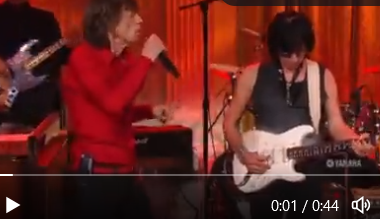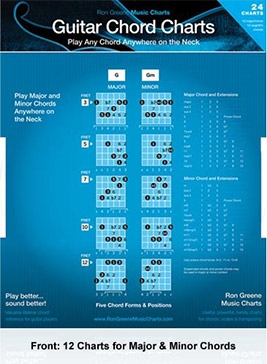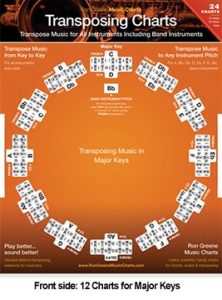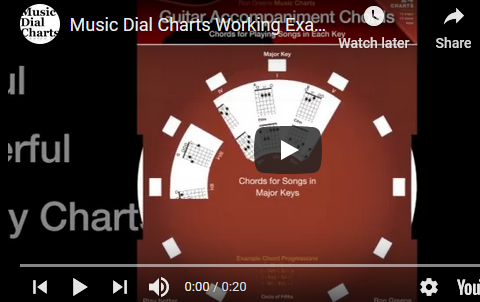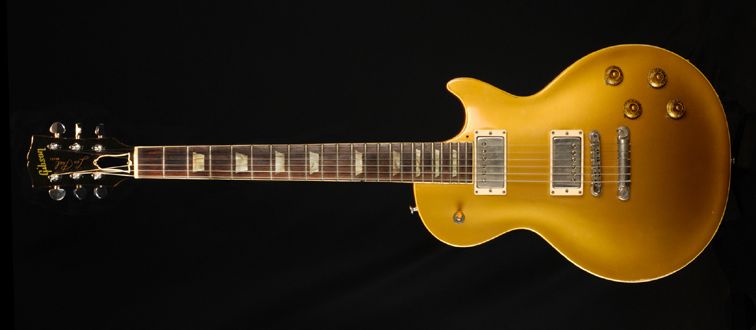As a musical instrument player, we’ve got you covered this Holiday.
Here’s the deal… With ‘any’ physical Dial purchase from our Music Dials selection, you’ll receive a Free, Guitar Chord Charts Music Dial… Yep, that’s 100%! Off the regular price [a retail value of $14.99!]. It’s yours free when you purchase ‘any’ physical product from our Music Dials selection.
Guitar, Bass, Keyboard, Mandolin, Banjo… You’re Dialed In!
Now Free With Any Purchase! The deal ends on Jan 1st.
This Free Guitar Chord Charts Music Dial will be included with your order.
Heck, even if you want to buy just a Guitar Chord Charts Dial, you’ll get another one for free, to be used as a gift for a family member or a friend. It will be automatically included in your order.
Like all of our easy-to-use two-sided chart dials, this Guitar Chord Charts Music Dial shows you the essential information that contains 24 guitar chord charts. It provides you with…
* All 5 chord forms including fret positions in every key.
* All formulas for basic chord forms as well as all chord extensions including suspended chords, power chords, 6th, 7th, 9th, 11th, and 13th chords.
* Fingering for all the chords in all positions including extensions.
Forget those big fat cumbersome chord books or trying to find the right app. This is a complete guitar chord reference guide on a 2-sided movable dial… It fits right into your instrument case.
> Go to the Music Dials Website Here for Your Deal!
Guitar, Bass, Keyboard, Mandolin, Banjo… We have a Dial for you!
Many uses include:
* Teaching tool / visual reference guide
* Learning to play all forms & positions for major, minor, augmented, and diminished chords
* Figuring out chords to songs by ear, jamming, improvising
* Songwriting
* Learning basic chord theory
Once you discover its many uses, our Music Dial Charts will become your permanent fixture in your musician’s library, as a lifetime music reference guide and your primary instrument-playing resource assistant.
Remember, even if you want to buy a Guitar Chord Charts Dial, you’ll get another one for free, to be used as a gift for a family member or a friend.
Dial into your Free deal here (click dial image)…
Now Free With Any Purchase! The deal ends on Jan 1st.

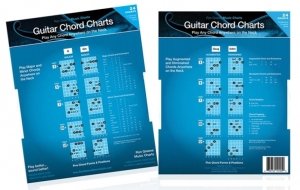
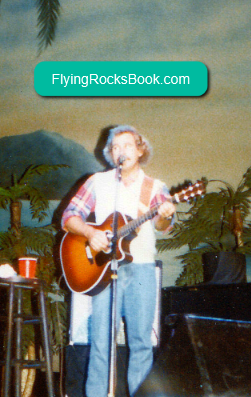
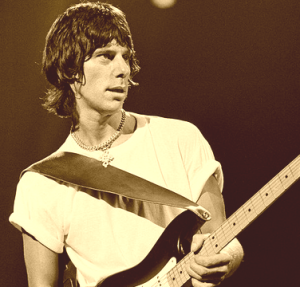 In my humble opinion, one of the best post-60s onward rock guitar players of all time passed away.
In my humble opinion, one of the best post-60s onward rock guitar players of all time passed away.